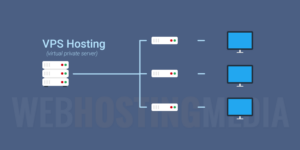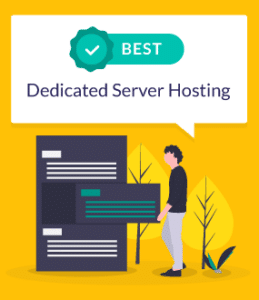AWS, a pioneer in cloud computing, has revolutionized the way websites and applications are hosted. The cloud infrastructure provided by AWS offers unparalleled scalability, reliability, and performance, making it an ideal choice for businesses and individuals seeking a cutting-edge hosting solution.
Why Choose AWS for Hosting Your Site?
Scalability and Flexibility for Varying Workloads
AWS allows you to scale your hosting resources seamlessly based on demand. Whether you’re running a small blog or a high-traffic e-commerce site, AWS can adapt to your workload, ensuring optimal performance at all times.
High Availability and Reliability with Global Data Center Infrastructure
AWS operates a global network of data centers, enabling your site to be hosted across multiple regions. This distributed infrastructure enhances availability and reliability, reducing the risk of downtime due to hardware failures or regional issues.
Cost-Effectiveness and Pay-as-You-Go Pricing Model
AWS follows a pay-as-you-go pricing model, allowing you to pay only for the resources you consume. This cost-effective approach makes AWS hosting accessible to businesses of all sizes, eliminating the need for upfront capital investment.
Key AWS Services for Hosting a Site
To host your site on AWS, you’ll leverage key services that form the backbone of cloud hosting:
Amazon EC2 (Elastic Compute Cloud) for Virtual Servers
- EC2 provides virtual servers in the cloud, allowing you to run applications and host websites with flexibility in terms of computing power.
Amazon S3 (Simple Storage Service) for Scalable and Secure Storage
- S3 offers scalable object storage, suitable for hosting static website content, images, videos, and other media files securely.
Amazon Route 53 for Domain Registration and DNS Management
- Route 53 simplifies domain registration and DNS management, enabling you to configure domain settings seamlessly.
Setting Up Your Site on AWS: A Step-by-Step Guide
Creating an AWS Account and Accessing the AWS Management Console
- Visit the AWS Website:
- Navigate to the AWS website and click on the “Create an AWS Account” button.
- Provide Account Information:
- Fill in the required account information, including email address, password, and account name.
- Credit Card Information:
- Enter your credit card information for billing purposes. AWS offers a free tier with limited resources for new users.
- Access the AWS Management Console:
- Once your account is set up, log in to the AWS Management Console, the central hub for managing your AWS resources.
Launching an EC2 Instance and Configuring Security Settings
- Navigate to EC2 Dashboard:
- In the AWS Management Console, navigate to the EC2 dashboard.
- Launch an EC2 Instance:
- Click on “Launch Instance” to create a virtual server. Choose an Amazon Machine Image (AMI) and configure instance details.
- Configure Security Groups:
- Set up security groups to control inbound and outbound traffic to your EC2 instance. Define rules for HTTP, HTTPS, and other necessary protocols.
Uploading and Serving Content with Amazon S3
- Create an S3 Bucket:
- In the S3 dashboard, create a new bucket to store your website content.
- Upload Content to S3:
- Upload your website files, including HTML, CSS, images, and other assets, to the S3 bucket.
- Configure Bucket Policies:
- Set bucket policies to make your content publicly accessible. Ensure proper permissions for reading objects.
Configuring Domain Settings with Amazon Route 53
- Register a Domain:
- In the Route 53 dashboard, register a new domain or transfer an existing one.
- Configure DNS Settings:
- Set up DNS records, including A and CNAME records, to point to your EC2 instance and S3 bucket.
- Enable HTTPS:
- Obtain an SSL certificate using AWS Certificate Manager and configure HTTPS settings for secure communication.
Optimizing Site Performance on AWS
Implementing Content Delivery Networks (CDNs) for Faster Loading Times
- Integrate CDN Services:
- Utilize AWS CloudFront to distribute your content globally, reducing latency and improving loading times for users worldwide.
Fine-Tuning EC2 Instance Configurations for Optimal Resource Utilization
- Monitor Resource Usage:
- Use Amazon CloudWatch to monitor EC2 instance metrics such as CPU utilization, network traffic, and disk I/O.
- Scale Resources as Needed:
- Adjust EC2 instance types and sizes based on performance metrics. Scale resources up or down to meet changing demands.
Ensuring Security for Your Site on AWS
Configuring Security Groups and Network Access Control Lists (NACLs)
- Define Security Group Rules:
- Configure security groups to allow only necessary inbound and outbound traffic. Restrict access to essential ports and protocols.
- Set Up NACLs:
- Use network access control lists to control traffic at the subnet level. Define rules for IP addresses and traffic sources.
Implementing SSL Certificates for Secure Data Transmission
- Request an SSL Certificate:
- Use AWS Certificate Manager to request an SSL certificate for your domain.
- Configure HTTPS Settings:
- Update your web server settings to enable HTTPS. Redirect HTTP traffic to HTTPS for secure communication.
Leveraging AWS Identity and Access Management (IAM) for Access Control
- Create IAM Users and Roles:
- Follow best practices by creating IAM users with the least privilege necessary. Define roles for services and applications.
- Implement Multi-Factor Authentication (MFA):
- Enable MFA for added security, especially for IAM users with administrative access.
Backup and Recovery Strategies on AWS
Regularly Backing Up Site Data Using Amazon S3 or EBS Snapshots
- Automate Backup Processes:
- Set up automated backup schedules using AWS Backup or scripts to create regular snapshots of your site data.
- Store Backups in Multiple Regions:
- Enhance data durability by storing backups in multiple AWS regions. This ensures redundancy in case of regional outages.
Monitoring and Managing Your Site on AWS
Utilizing Amazon CloudWatch for Real-Time Performance Monitoring
- Create CloudWatch Alarms:
- Define CloudWatch alarms for critical metrics, such as CPU utilization or error rates. Receive notifications for proactive issue resolution.
Implementing Alarms and Notifications for Proactive Issue Resolution
- Configure SNS (Simple Notification Service):
- Set up SNS to send notifications to your preferred channels, including email or SMS, when alarms are triggered.
Integration Possibilities with AWS Services
Exploring Integration with AWS Lambda for Serverless Functionality
- Deploy Serverless Functions:
- Integrate AWS Lambda for serverless functionality, allowing you to run code without provisioning or managing servers.
Leveraging Amazon RDS (Relational Database Service) for Database Hosting
- Set Up RDS Instances:
- Host your site’s database on Amazon RDS for managed relational database services. Configure security groups and optimize performance.
Common Challenges and Solutions in AWS Hosting
Addressing Issues Like Unexpected Traffic Spikes and Optimizing Costs
- Implement Auto Scaling:
- Set up Auto Scaling groups to automatically adjust the number of EC2 instances based on traffic fluctuations.
- Optimize Resource Usage:
- Regularly review and optimize resource configurations to avoid unnecessary costs. Leverage AWS Cost Explorer for cost analysis.
Troubleshooting Common Problems and Utilizing AWS Support Resources
- Use AWS Support Plans:
- Subscribe to an AWS support plan for access to technical support, documentation, and forums. Resolve issues promptly with expert assistance.
User Reviews and Experiences with AWS Hosting
Compilation of Positive User Experiences and Testimonials
- Reliable Performance:
- Users praise the reliable performance of AWS hosting, especially during high-traffic events.
- Global Availability:
- Positive experiences highlight the global availability of AWS, ensuring a seamless experience for users across different regions.
Real-World Insights into the Reliability and Performance of Hosting a Site on AWS
User testimonials provide valuable insights into the experiences of individuals and businesses hosting their sites on AWS. Positive feedback often emphasizes the combination of reliability, scalability, and global reach, making AWS a preferred choice for hosting.
Conclusion
In conclusion, hosting a site on AWS opens up a world of possibilities, combining the power of cloud computing with unparalleled features and services. From setting up your site to optimizing performance, ensuring security, and exploring integration options, AWS offers a comprehensive hosting environment for businesses and individuals alike.
As technology evolves, AWS continues to lead the way, providing innovative solutions for the ever-changing landscape of web hosting. Explore the potential, harness the capabilities, and embark on your AWS hosting journey with confidence, knowing that your site is backed by a robust and globally recognized cloud infrastructure


